162 Beed Histories from Fairyland
BREEDING GROUNDS FOR RUMOUR
by David Hancock
"The real historian is...a nuisance when we want to
romance about 'the old days' or 'the ancient Greeks
and Romans'. The ascertained nature of any real thing
is always at first a nuisance to our natural fantasies
--- a wretched, pedantic, logic-chopping intruder upon
a conversation which was getting on famously without it".
(C.S.Lewis, Miracles).
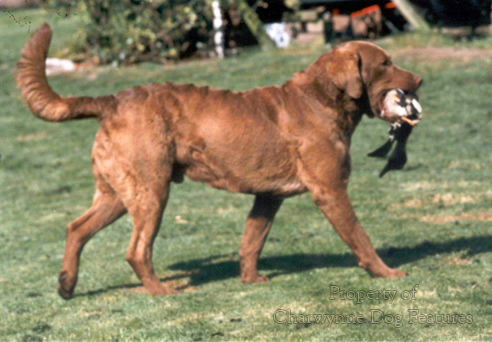
The more I look at the recorded histories of the modern pedigree breeds of the domestic dog, the more I understand Thomas Carlyle's statement that 'History is a distillation of rumour' and Henry Ford's rightly much-criticised and intentionally hyperbolic opinion that 'all history is bunk'. And whilst I am all for a little romance in life, when the desire for a romantic background overcomes the surely overwhelming need for the truth, then the latter must regain the high ground. With so many of the official histories of our contemporary breeds of pedigree dogs the records may not be all 'bunk' but they do contain too much 'bunkum'. Lazy plagiarism, sloppy or non-existent research or failing to corroborate one author's opinion all add up to one thing -- faulty historical records.
We are told for example that the Chesapeake Bay Retriever originates from two dogs which in 1807 were rescued from a sinking brig. Why these two particular dogs should stand out when, at that time, this part of North America abounded with cross-bred retriever-type dogs escapes me. The statue erected in the memory of these dogs depicts two very typical early Newfoundlands. Dogs like this, which can be linked with the ancient water-dogs, were used extensively as ship's dogs, diving overboard for lost lines etc, all along the North American eastern seaboard. Why these two dogs from one of the frequent wrecks should have caused all local hunters and wild-fowlers (rarely as a group associated with easily-convinced fad-following) to abandon their already-prized retriever-type dogs has never been explained.
The Great Retriever, the Newfoundland, is often recorded as coming from Pyrenean Mountain Dogs taken to the New World by Breton fishermen! Are fishermen from coastal areas in the north likely to have taken huge dogs, from mountain regions hundreds of miles to the south, over three thousand miles in tiny boats? Why should they? And if you want a dog to excel in water, why go for the blood of a high-pasture herd-protecting breed? I believe this story originated from a German scholar without any tangible evidence at all.
But even worse is the story, perpetuated by no less an authority than Arthur Croxton-Smith, that our Golden Retrievers originated from a troupe of circus-dogs. Now any sensible sportsman in the last century would have used the blood of clever, biddable, keen dogs in the quest for an improved working performance---in stark contrast to the situation today, in which not only is the gene-pool closed in each pedigree breed but the mind of the breeders too.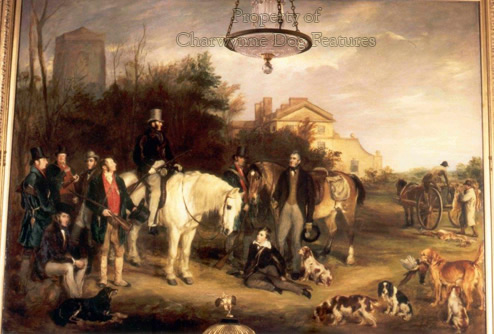
But why should a few gifted and agile circus-dogs have suddenly bettered the long-acknowledged prowess and highly-developed instincts of born retrievers such as our curly-coated and flat-coated retrievers, decoy-dogs and water-spaniels? The ancient red decoy-dog, now lost to us here but perpetuated in the form of the Nova Scotia duck-tolling retriever and the Kooikerhondje of Holland, was so like our modern Golden Retrievers. No sportsman of any repute would have allowed such instinctive cleverness to go untapped in the pursuit of excellence in retrieving skill in the shooting field.
The circus-dogs were supposed to have been used around 1860; Grant's painting "A Shooting Party at Ranton" of 1840, which hangs at Shugborough Hall in Staffordshire, depicts just about perfectly the Golden Retriever of today. But, still with gundogs, look at the official Kennel Club-approved breed standard of the English Springer Spaniel and you will find these words: ..."breed is of ancient and pure origins, oldest of sporting gundogs...raciest in build of all British land spaniels". Yet as long ago as 1621, Gervase Markham was writing: "It is reasonable that people should cross Land Spaniels and Water Spaniels, and the Mungrells between these, and the Mungrells of either with the Shallow-flewed Hound, the Tumbler, the Lurcher and the small bastard Mastiff...all of which are yet inferior to the truebred Land Spaniel--if one could still find one of those." Not much in the way of pure origins here!
Our terriers too possess histories with the facts on record in conflict with the facts in reality. Outside the show ring, we call a smooth-coated, all but tail-less and almost legless, hound-marked terrier a "Jack Russell" despite the legendary hunting man's preference for a 14", 14lb terrier with a rough-coat and a full tail! One contemporary fieldsports writer regularly refers to the Bedlington as having a Dutch origin. He is likely to have read that this breed was once referred to as Holland's terrier, not after the country of that name but the famous Bedlington terrier-breeder Taprell Holland.
Lurcher correspondents have a fondness for using the pseudonym "tumbler". But the tumbler was the decoy-dog, the lurcher was the "stealer". Even the much-quoted Dr. Caius, no great expert on dogs, got that right. I know of no lurcher which hunts by "dissembling friendship" as the tumbler was quaintly described by him as doing. But sportsmen have no monopoly of misapprehensions or notional noumena.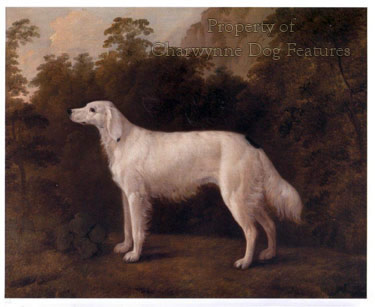
The Australian Shepherd, mainly developed in America after being taken there with sheep imported from Australia in the last century, is alleged to have originated in merle sheepdogs from the Basque country. Where is the evidence? We can read that our Bearded Collie originates from Polish lowland sheepdogs imported into Scotland four hundred years ago. It is of course a matter of record that sheepdogs often accompanied and were purchased with sheep. And why not mate your best dogs with somebody else's excellent stock ? But the bearded collie was well established in Britain long before this incident is alleged to have occurred. What happened to all the bloodlines pre-dating this importation ? The Polish sheepdog is born tail-less too, unlike a beardie. One can forgive perhaps the romantic zeal of enthusiastic breed-researchers but not so easily experienced art-historians and otherwise well-informed museum professionals.
If you pick up books like "Stubbs' Dogs" by Robert Fountain and Alfred Gates, both trustees of the British Sporting Art Trust, and "Dogs of the last hundred years at the British Museum (Natural History)" by Kim Dennis-Bryan and Juliet Clutton-Brock (and actually published by the British Museum) you soon discover that even these distinguished authors have fallen into every conceivable trap for the overnight dog-expert. They seem to regard such writers as Dr. Caius, Youatt, Taplin and Daniel as authorities on dogs and, much worse, relate all past types only with modern pedigree Kennel Club-recognised breeds.
But in the museum publication we can find howlers like these: "Most breeds of hounds have long hanging ears which may even cover the eyes so that when the dog is tracking it is doing so entirely with its nose"..."The English Setter is descended from the Spanish Pointer and the long-coated spaniels"..."The hunting spaniels work...partly like a pointer"..."The Jack Russell Terrier, a cross between the fox-terrier and the Sealyham Terrier". It does not take a great deal of research, particularly for a museum professional, to discover that the Rev. John Russell and his terriers were well established before Capt. Edwardes's breed had even been heard of.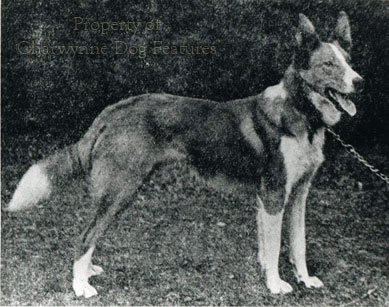
With our fondness for creating museums we are often accused as a nation of not only living in the past but having an innate yearning for bygone days. And, yes, I admit to a sense of loss over the disappearance of many of our old native breeds like the Smithfield sheepdog, the English White Terrier, the Tweed Water Spaniel, the Welsh Hillman and the Llanidloes Setter. I am saddened too when I see our Bullmastiffs, Airedales and Bullterriers supplanted by guard-dogs from Germany, there being well over a quarter of a million Rottweilers, Dobermanns and German Shepherd Dogs in the United Kingdom nowadays. A century ago there were none. We should be proud of our native breeds and the fact that we have created more breeds of dog than any other nation. We certainly should never allege a foreign ancestry for such a prized British breed as the Beardie. And is the Australian Shepherd not more likely to have gone from Britain to Australia? The bob-tailed working sheepdogs of the Black Mountain on the border between Herefordshire and Wales still display the type very precisely.
Two hundred years ago, Lessing wrote that absolute truth belongs to God alone. A century before him, Sir Henry Wotton wrote of the 'happy man' "whose armour is his honest thought, and simple truth his utmost skill." History may well have an element of 'bunk' in it; recorded history can often be the work of scholars who for all their intellectual prowess wouldn't know a Segugio from a Shiloh Shepherd Dog or a Slovac Cuvac from a Xoloitzcuintli and absolute truth may be simply divine. But even if the truth can spoil a good story, it must be respected, if only for its ensuing value. 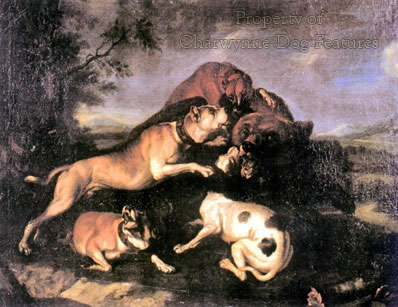
In my working life I was responsible, at various times, for the management of four different museums and have a lasting respect for curatorial skills. But recorded history must rely on known facts and the best possible conclusive reasoning. The tendentious relating of the history of the Mastiff by well-meaning but misguided breed historians like Wynn, Adcock, Kingdon and Taunton has misled many generations and never benefitted the breed. My own belief that my Bullmastiffs are descended, through the 'holding dogs', from the hunting mastiffs used by primitive hunters, has led me to promote, encourage and develop their skills as heavy hounds. I now have two dogs with lives made fuller by the joys of being excited by scent -- and the rapture of rabbiting!
Accurate well-researched breed histories, ideally conducted by those "whose armour is honest thought and simple truth their utmost skill", make us realise what our dogs are for. Only then can we appreciate their often hidden instincts and offer stimulation so that are spiritually happier. The invention of false provenances for any pedigree breed, however romantic or exotic, undermines the rightful heritage of the breed, is never necessary and contributes nothing to the breed itself. The next time you see a litter of non-pedigree working sheepdogs in Scotland and spot a goat-haired 'intruder' among the pups, there really is no need to check whether a Polish grain ship called at a nearby port a couple of months earlier. That's the way the gene pool works in this breed type, no help from Poland is required!